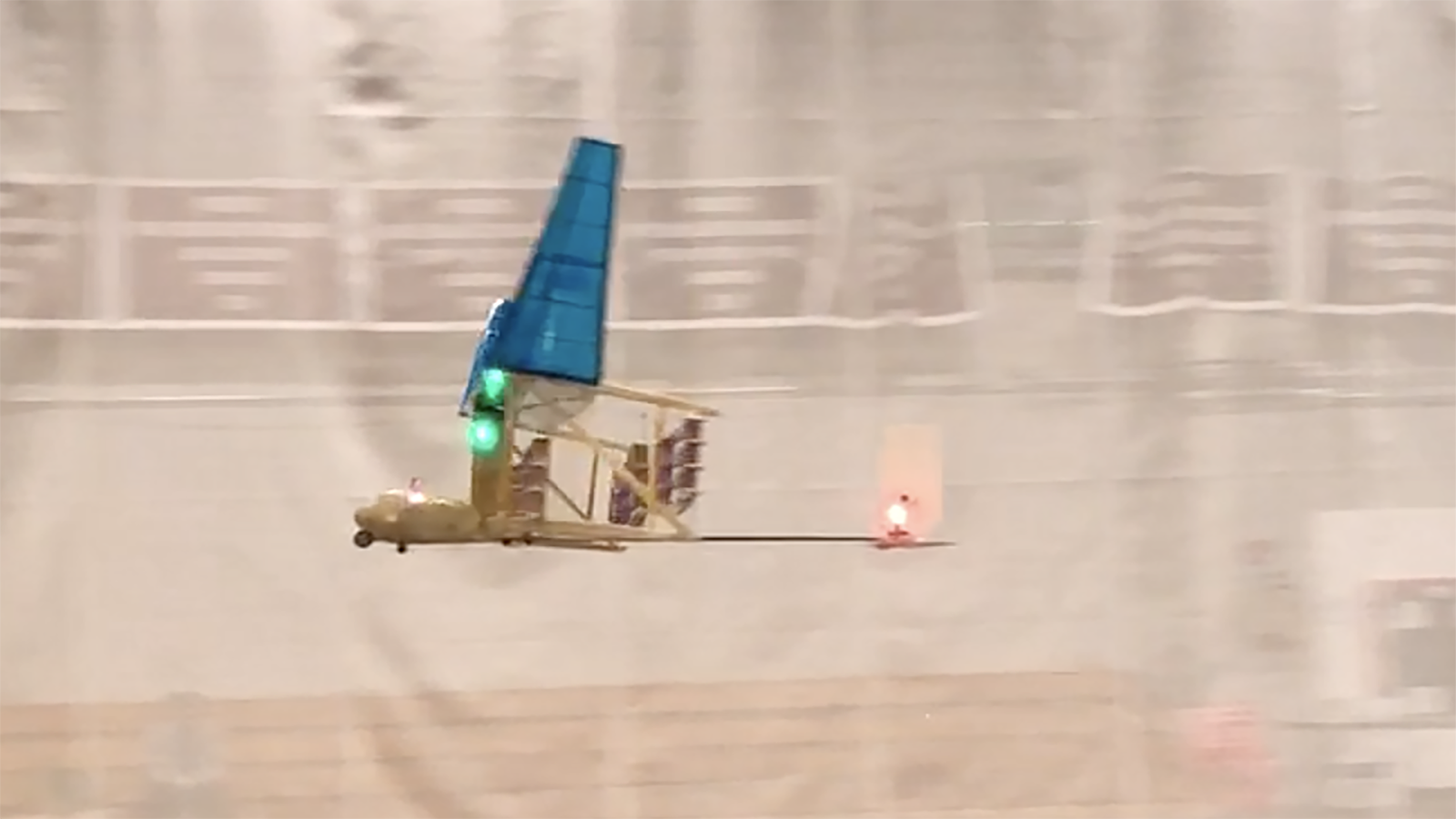Stay Up to Date
Submit your email address to receive the latest industry and Aerospace America news.
Steven Barrett of MIT has an idea that could disrupt the conventional thinking about what an electric vertical takeoff and landing aircraft should look like, and NASA has awarded him a $175,000 grant to explore the concept.
Four years ago, Barrett and members of his project team at MIT’s Laboratory for Aviation and the Environment flew a small aircraft inside a gymnasium. Once sprung into the air by a bungee, the aircraft didn’t need propellers or any moving parts to sustain powered flight. Instead, it relied on electroaerodynamic (EAD) thrust, achieved by feeding a charge through wires strung underneath the aircraft’s wing to create an electric field that accelerates ions without the need for fuel.
Air taxi developers have generally settled on electric-powered rotorcraft as the only viable method of ferrying passengers in and between urban areas. Could the EAD technology be an alternative form of VTOL, the rotor-based vertical takeoff and landing designs that most air taxi business plans currently hinge on? To start the process of finding out, NASA in February awarded Barrett a nine-month, $175,000 grant to design a near-silent, nonrotorcraft VTOL and submit a report assessing the feasibility of applying the technology to “intra- and inter-city passenger transport,” according to NASA.
That near-silence could turn out to be golden, given the desire to fly air taxis near residential areas at night without complaints. “It’s likely that EAD will have its main application, at least in the foreseeable future, where noise is a critical concern,” Barrett told me in an email exchange.
The primary technical barrier to be overcome is thrust density, Barrett said. A large battery producing 40,000 volts of electricity was needed to create enough power for the 2018 test flights.
“In other words, could enough thrust be produced in a small enough package to be useful? That’s what we think we have a way of fixing in this project,” he explained.
Barrett believes EAD-powered eVTOLs will eventually fly with passengers and cargo, but the initial application will be ferrying essential cargo, such as time-sensitive medical supplies in areas or at times when noise concerns would prohibit rotorcraft flight.
Any prototype or demonstrator eVTOL produced by MIT “will definitely be remotely piloted,” he said, adding: “There’s no real point nowadays to trying out risky technologies in any way other than a remotely piloted or autonomous vehicle.”
When might such an aircraft fly? “It will likely take a few years to get to a good eVTOL demonstrator,” Barrett added.
While this initial grant is for nine months, Barrett and MIT can apply for a larger follow-up grant that would cover an additional two years of study.
About Aaron Karp
Aaron is a contributing editor to the Aviation Week Network and has covered the aviation business for 20 years. He was previously managing editor of Air Cargo World and editor-in-chief of Aviation Daily.
Related Posts
Stay Up to Date
Submit your email address to receive the latest industry and Aerospace America news.




